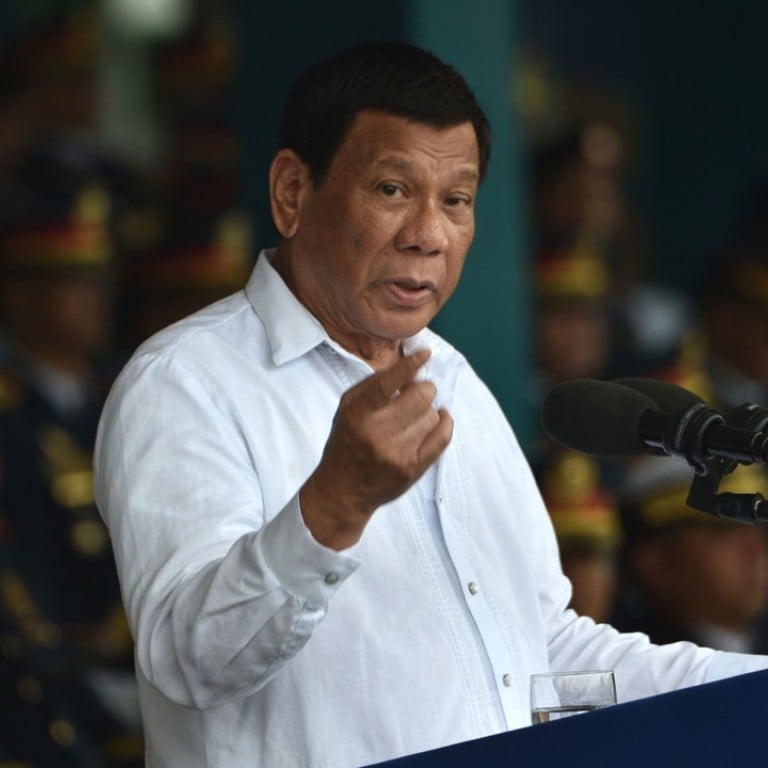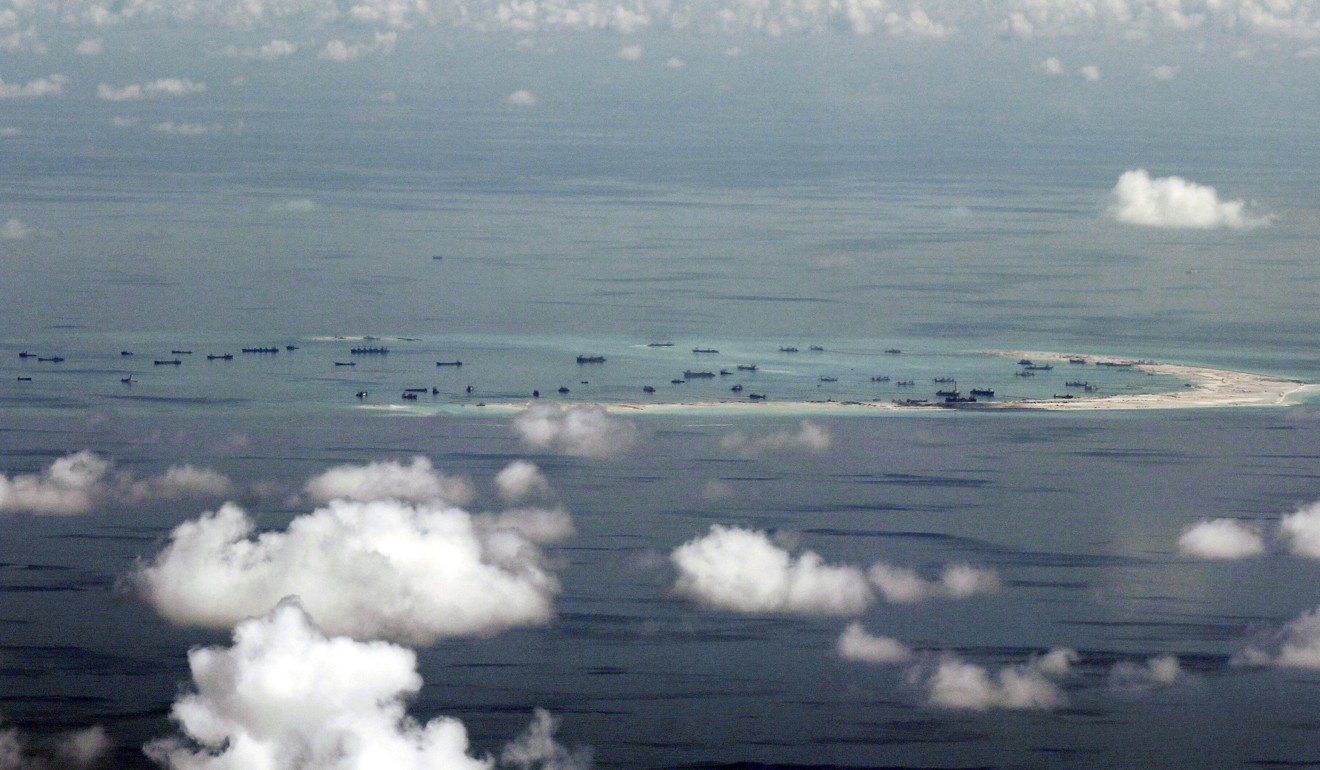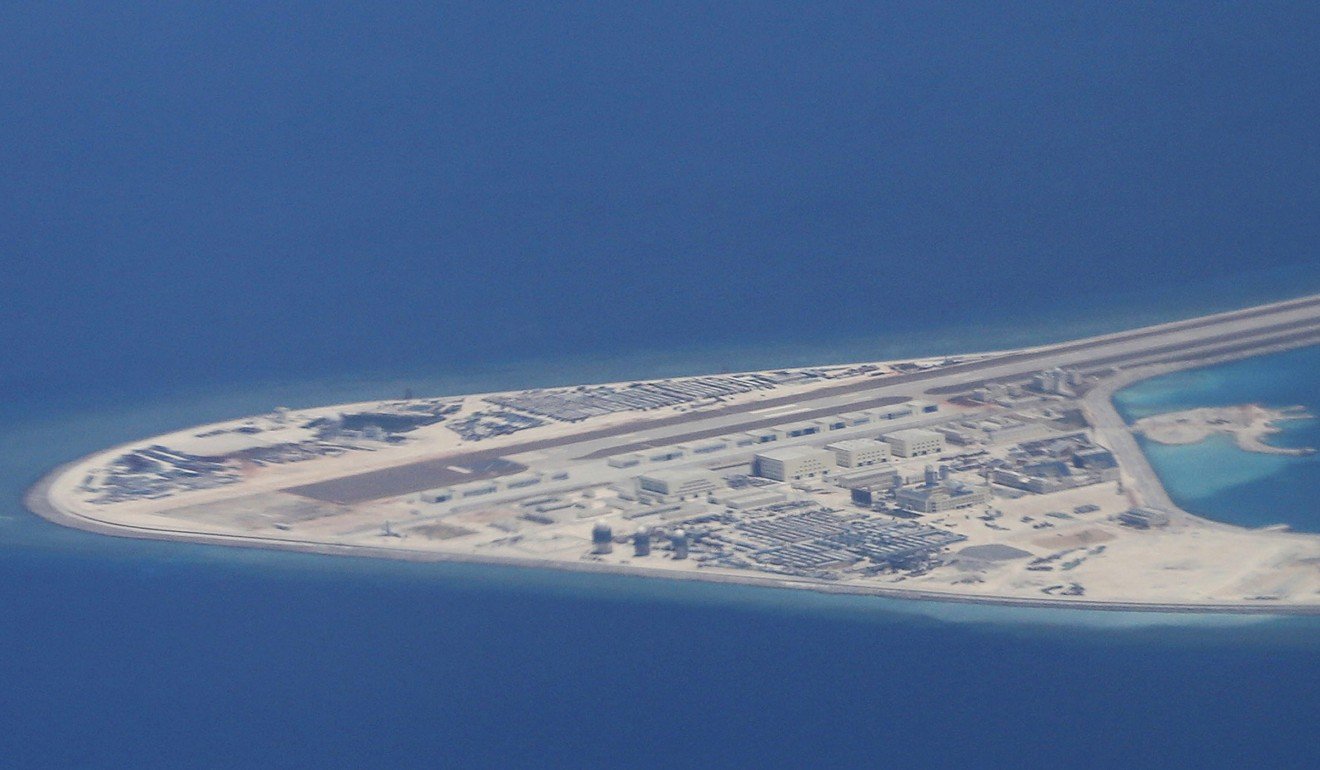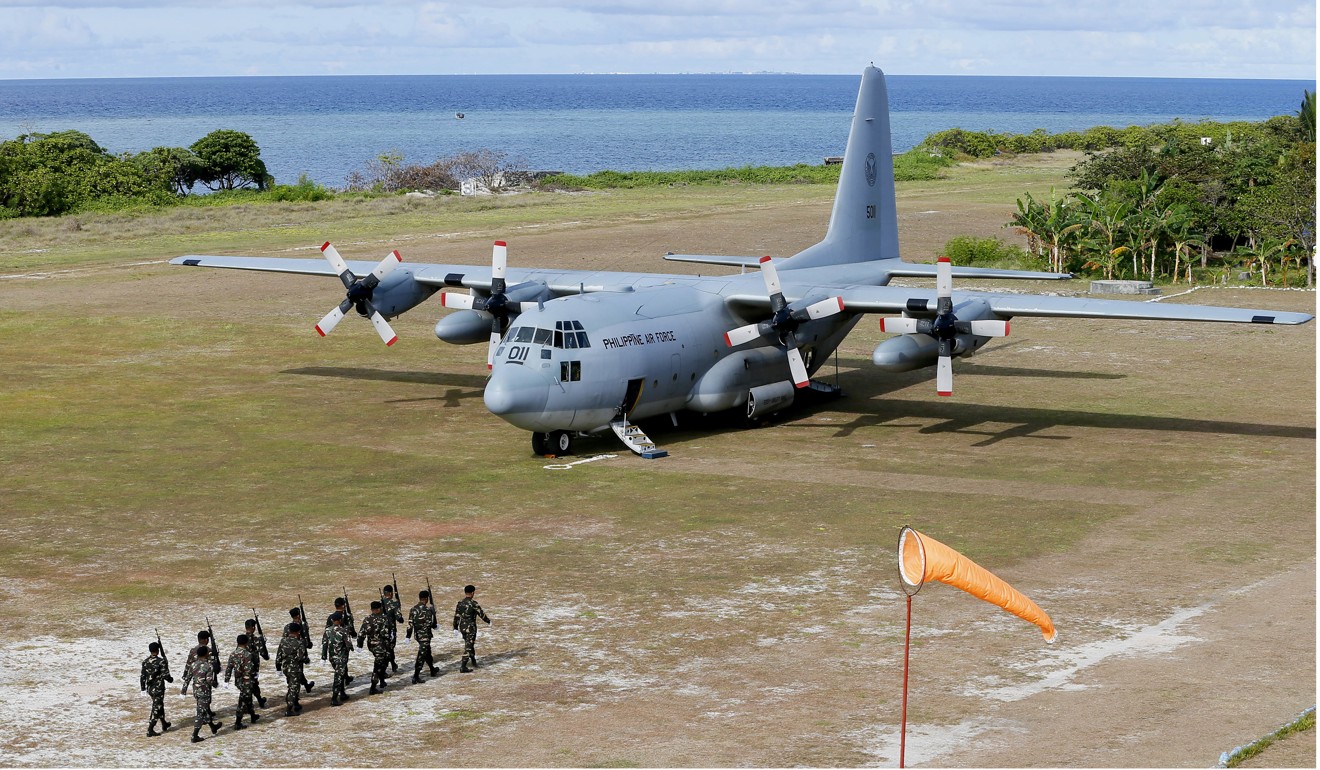
‘Someone will press a trigger’: Duterte says China’s claim to disputed islands’ airspace ‘is wrong’ and could be ‘flashpoint’ for conflict
Philippine president followed most open criticism of Beijing so far by praising China for its readiness to help
The Philippine president said on Tuesday that China’s claim to airspace above newly built islands and surrounding waters in the disputed South China Sea “is wrong” and that Beijing’s demands that others leave those areas could become a “flashpoint” for conflict.
President Rodrigo Duterte’s remarks in a speech to an audience that included the American ambassador and other foreign guests were a rare public criticism of China, which he has refused to antagonise to nurture closer relations.
“They have to rethink that, because that would be a flashpoint someday and even, you know, warning others,” Duterte said of China’s actions to uphold its claims in the disputed waters.
He also said that “I hope that China would temper … its behaviour”, warning that in the disputed sea, “one of these days a hothead commander there will just press a trigger”.
“You cannot create an island, it’s man-made, and you say that the air above these artificial islands is yours. That is wrong because those waters are what we consider international sea,” Duterte said.
He added that “the right of innocent passage is guaranteed. It does not need any permission to sail through the open seas”.
Two weeks ago, the Philippines expressed concern to China over an increasing number of Chinese radio messages warning Philippine aircraft and ships to stay away from Beijing-held artificial islands in the disputed waters.
CNN journalists reported last week that the Chinese military repeatedly warned a US Navy P-8A Poseidon plane, which they were allowed to board, to “leave immediately and keep out to avoid any misunderstanding” while the reconnaissance aircraft flew close to some of the man-made islands.

During the rambling speech, Duterte nevertheless praised Beijing for its readiness to provide help.
A Philippine government report showed that in the second half of last year, Philippine military aircraft received Chinese radio warnings at least 46 times while patrolling near the artificial islands built by China in the South China Sea’s Spratly archipelago.
Philippine officials have raised their concerns twice over the radio transmissions, including in a meeting with Chinese counterparts in Manila earlier this year.
The meeting focused on the Asian countries’ long-unresolved territorial disputes, according to two officials who spoke on condition of anonymity because they were not authorised to discuss the issue publicly.

China has transformed seven disputed reefs into islands using dredged sand. The new islands are near islands occupied by Vietnam, the Philippines and Taiwan. Malaysia and Brunei are the other claimants to the chain of islands and barren islets and atolls.
The messages used to originate from Chinese coastguard ships, but military officials suspect the transmissions now also come from the Beijing-held artificial islands, where far more powerful communications and surveillance equipment has been installed along with weapons such as surface-to-air missiles.
“Our ships and aircraft have observed an increase in radio queries that appear to originate from new land-based facilities in the South China Sea,” said Commander Clay Doss, public affairs officer of the US 7th Fleet, in response to questions about the Chinese messages. “These communications do not affect our operations.”

Although the US lays no claims to the strategic waterway, its navy has deployed ships and aircraft in operations to promote freedom of navigation and overflight, but which China protests as foreign meddling in an Asian dispute.
A Philippine air force plane on patrol near the Chinese-held islands received a particularly offensive radio message in late January when it was warned by Chinese forces that it was “endangering the security of the Chinese reef. Leave immediately and keep off to avoid misunderstanding”, according to the Philippine government report.
Soon afterwards, the plane received a veiled threat: “Philippine military aircraft, I am warning you again, leave immediately or you will pay the possible consequences.” The Filipino pilot later “sighted two flare warning signals from the reef”, said the report, which identified the Chinese-occupied island as Gaven Reef.

China has repeatedly said it has the right to build on what it says is its territory and defend its sovereignty at all costs.
Philippine air force chief Lieutenant General Galileo Gerard Rio Kintanar Jnr said Filipino pilots respond calmly to the Chinese radio messages and proceed with their mission as planned.
He added that the higher number of reported radio challenges reflects the Philippine military’s commitment to protect the country’s territorial interests through intensified patrols.

